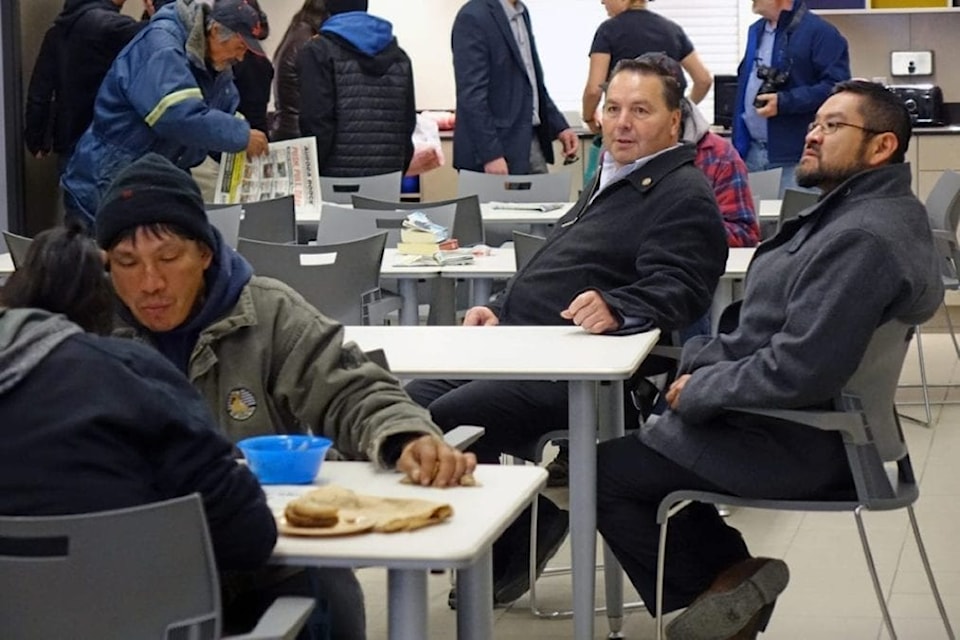We will get this out of the way first. Northern News Services owns the day shelter and sobering centre building.
 The building is leased to the territorial government, which has contracted the NWT Disabilities Council to operate the shelter.
The building is leased to the territorial government, which has contracted the NWT Disabilities Council to operate the shelter.
The decision to turn the building over to the government for this purpose has not been popular with neighbours but now that at least one city councillor is calling for it to be shut down, we must ask: if not there, then where? And if not a day shelter, then what?
This has been an issue since the John Howard Society first opened a day shelter on 51 Street in 2009. The shelter faced an endless stream of criticism under the NWT John Howard Society's watch until one day the Yellowknife Health and Social Services Authority decided to pull the plug and start over with the disabilities council at the helm.
Apparently, the disabilities council is not up to the task either if we're hearing city councillor Niels Konge correctly, himself a critic of the shelter and other homelessness initiatives, including the city's Safe Ride program.
On Monday, after listening to neighbouring building owner April Desjarlais describe the chaos captured on her security cameras, Konge asked administration whether the shelter's conditional use permit could be revoked. Referring to the shelter's mainly Indigenous clientele, Konge told council chambers “people need to be accountable for their actions,” while calling the loitering, intoxication and sometimes bad behaviour occurring outside the facility a “free for all.”
To this we ask, what exactly is Coun. Konge proposing?
This is not the regular bar crowd getting out of control. Some of these people are sufferers of multi-generational trauma, and the survivors and offspring of residential school survivors, which spawns troubled souls and addictions.
Northerners know very well what it means to hold such people to account. It means an endlessly clogged court system, jail cells crammed with people charged with public intoxication offences, mischief and missed court dates. It means millions and millions of dollars spent on lawyers, court workers and police to arrest and prosecute society's most disadvantaged citizens.
They also know what would happen if the city did not to have a shelter or a dignified place to use the washroom. Bank entrances, stairwells and other public spaces would once again be overwhelmed with people seeking shelter from the cold. Alleys and alcoves would resume their function as open latrines. Vulnerable people would be even more at risk.
The police, city and GNWT, in their wisdom, eventually came around to the need for a different approach. Not only has treating the city's homeless as criminals been a systemic failure, it was also a moral and ethical failure.
If ours is to be a decent, tolerant society it must take care of its most disadvantaged citizens. To not do so is to promote an idea of society that is dark and ugly.
A shelter for addicts and the homeless will never be a popular neighbour wherever it is placed. We will point to the joint letter to the editor from the city and GNWT in response to our editorial from July 27, headlined: “More straight talk needed on sobering centre.” The letter noted that officials had considered 22 other locations before settling on its current home.
The reality is this a downtown problem and there is only so much downtown available. Putting the shelter in Kam Lake or Bristol Pit, as former mayoral candidate Bob Stewart suggested during last fall's election, would surely be a failure. And if the shelter is too close to the liquor store now how close is too close? Two blocks, three blocks, four blocks? What difference does it make to people who will consume anything to get them high or drunk and will choose the library to sleep it off if the shelter is too far away?
The day shelter and sobering centre has been a painful step but more needs to be done. Whether the shelter remains where it is right now or tries its luck somewhere else, the GNWT should consider a holistic approach when considering how to accommodate its neighbours.
Stores, restaurants and banks will not want to be next door but what about social services and health centres? We note that the Finn Hansen building owned by Desjarlais already has the Yellowknife Housing Authority as a tenant. This would seem like complementary location. Could the GNWT help in identifying other tenants that would make sense being next door to a shelter?
In the meantime, grievances have been raised. We wrote last summer about the need for more communication.
The disabilities council and Health Minister Glen Abernethy should be reaching out to Desjarlais and other neighbours to address their complaints.
